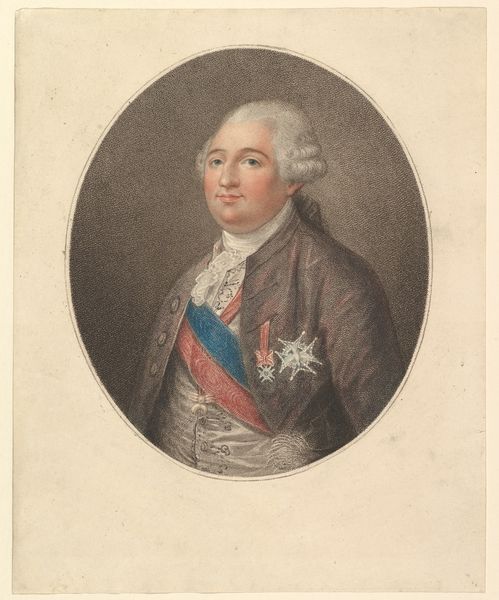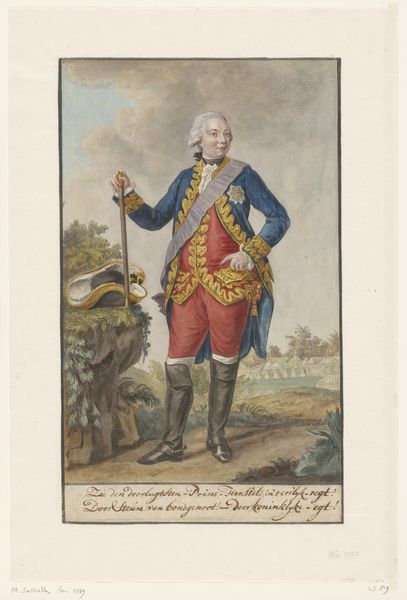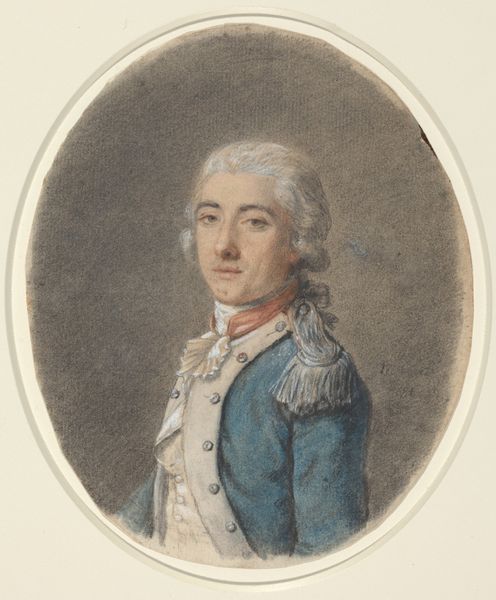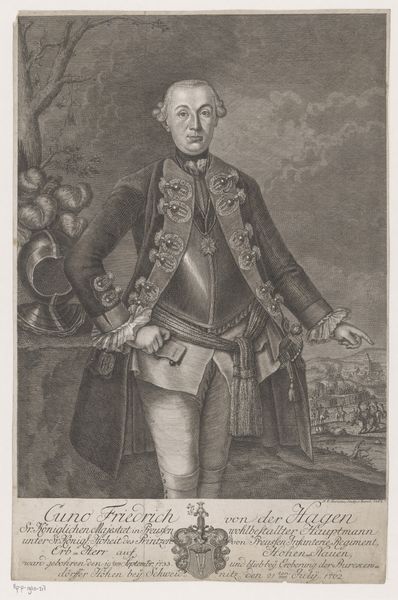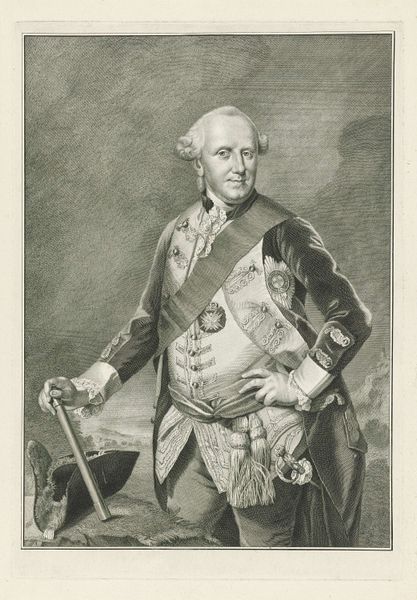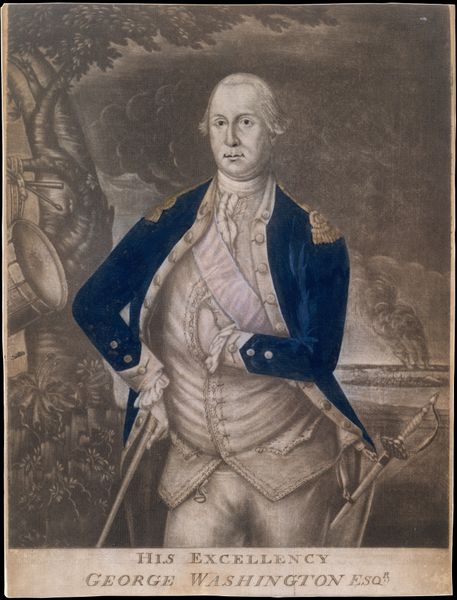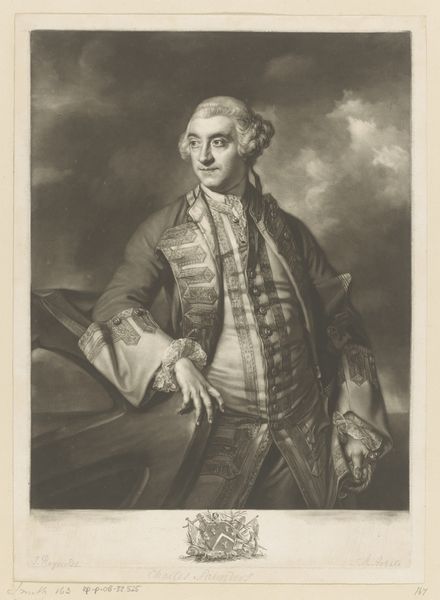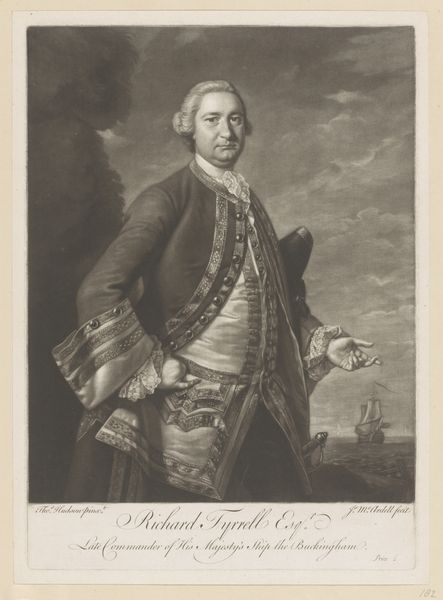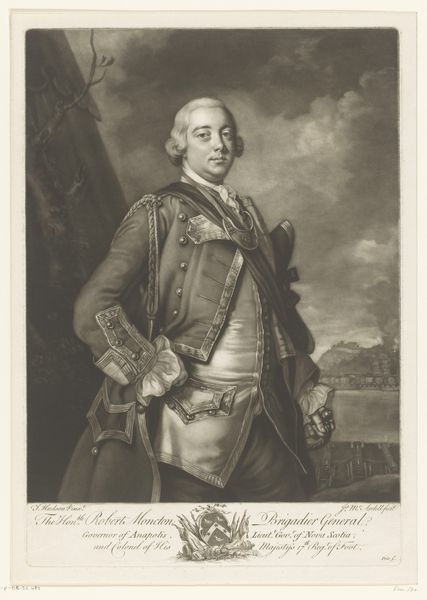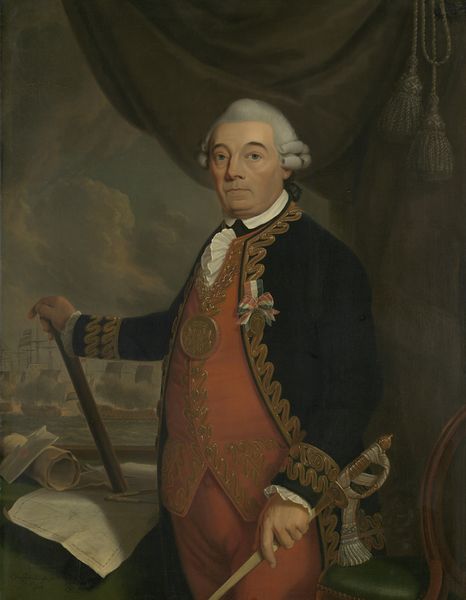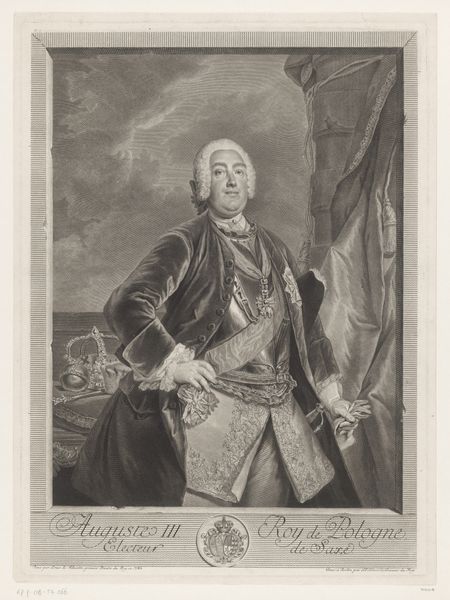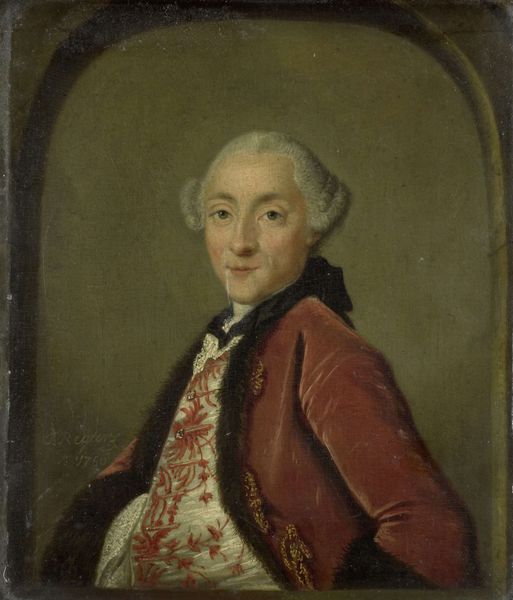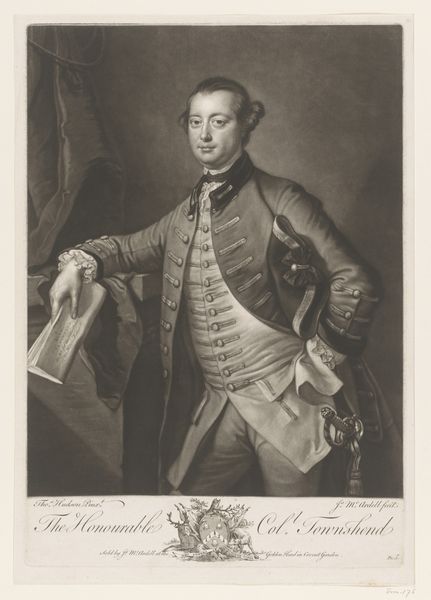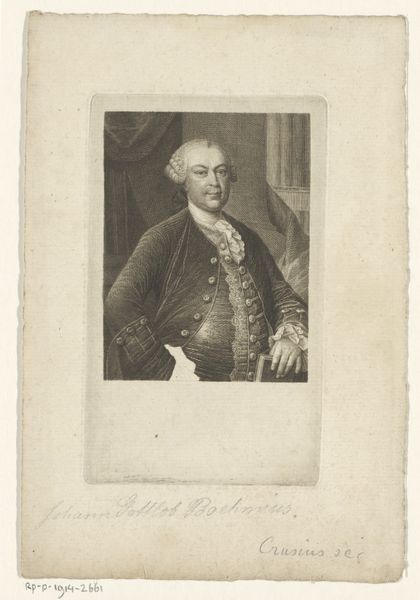
coloured-pencil, print
#
portrait
#
neoclacissism
#
coloured-pencil
# print
#
coloured pencil
#
history-painting
Copyright: National Gallery of Art: CC0 1.0
Editor: Here we have a print from around 1780 titled "Charles Henri, Comte d'Estaing." It appears to be made using colored pencils and printmaking techniques. It’s a very formal portrait, almost… theatrical. I see a globe and ships in the background. What do you see in this piece from your perspective? Curator: This portrait reflects a fascinating intersection of personal ambition, social power, and political messaging, particularly concerning the Comte d’Estaing’s role during the American Revolution. The inclusion of the globe and ships alludes to his naval command and France's global reach at the time, but the controlled neo-classicism style betrays the tensions underlying revolutionary fervor. Who do you think this work was designed to impress, and why? Editor: I imagine it was intended to impress both the French aristocracy, reminding them of their power and status, and potentially to bolster support for the French involvement in the American Revolution. The portrait projects strength and stability. Curator: Precisely. The choice of printmaking allows for wider distribution and thus dissemination of that carefully crafted image. This controlled, idealized depiction of d'Estaing serves to solidify his public image and, by extension, the French monarchy's authority, even as revolutionary ideas were beginning to challenge that authority. Editor: So, it’s less a genuine representation of the man and more about propagating an image? It’s almost like early political propaganda! Curator: Indeed! This reveals much about the role of art in constructing and maintaining social and political power during the late 18th century. What’s really interesting here is the disconnect between this polished image and the turbulent events that defined d'Estaing's career. Editor: This conversation has made me realize that art isn’t just about what’s on the surface but how it reflects and influences societal forces. Curator: Absolutely! Seeing art as intertwined with political and social landscapes can significantly enrich our understanding.
Comments
No comments
Be the first to comment and join the conversation on the ultimate creative platform.
